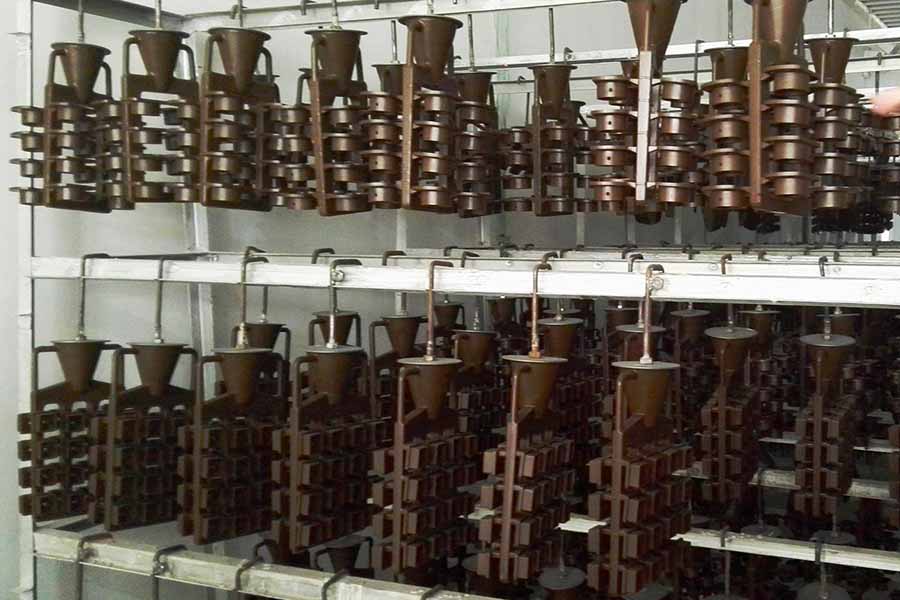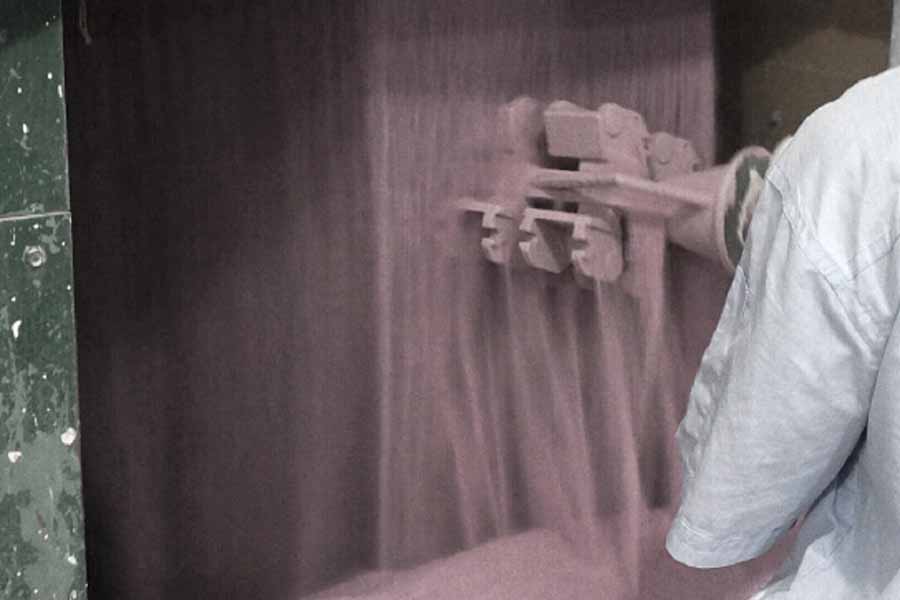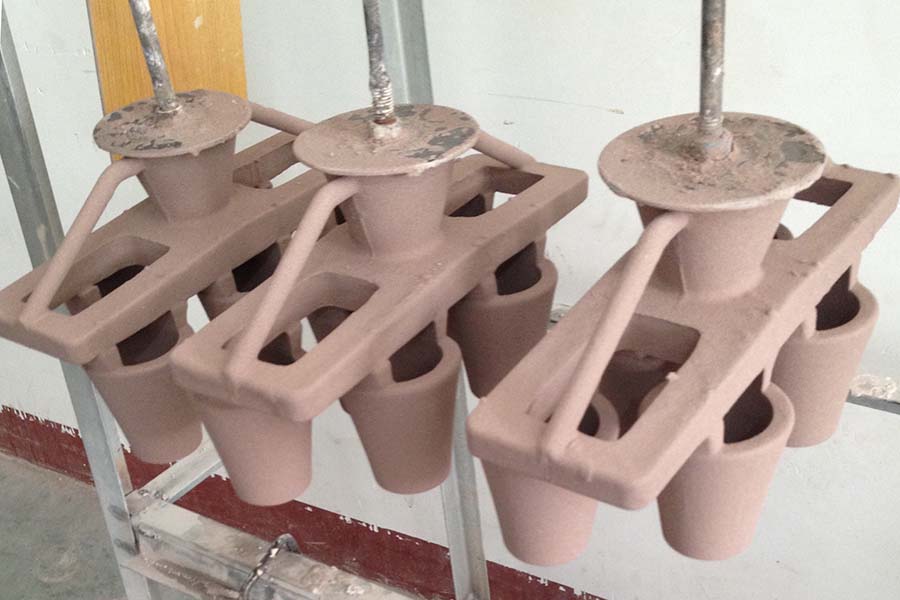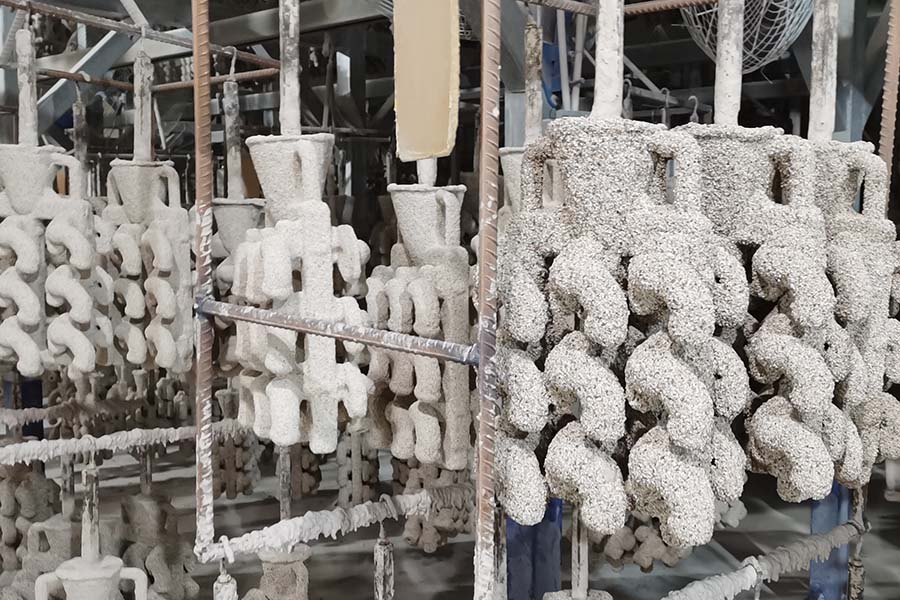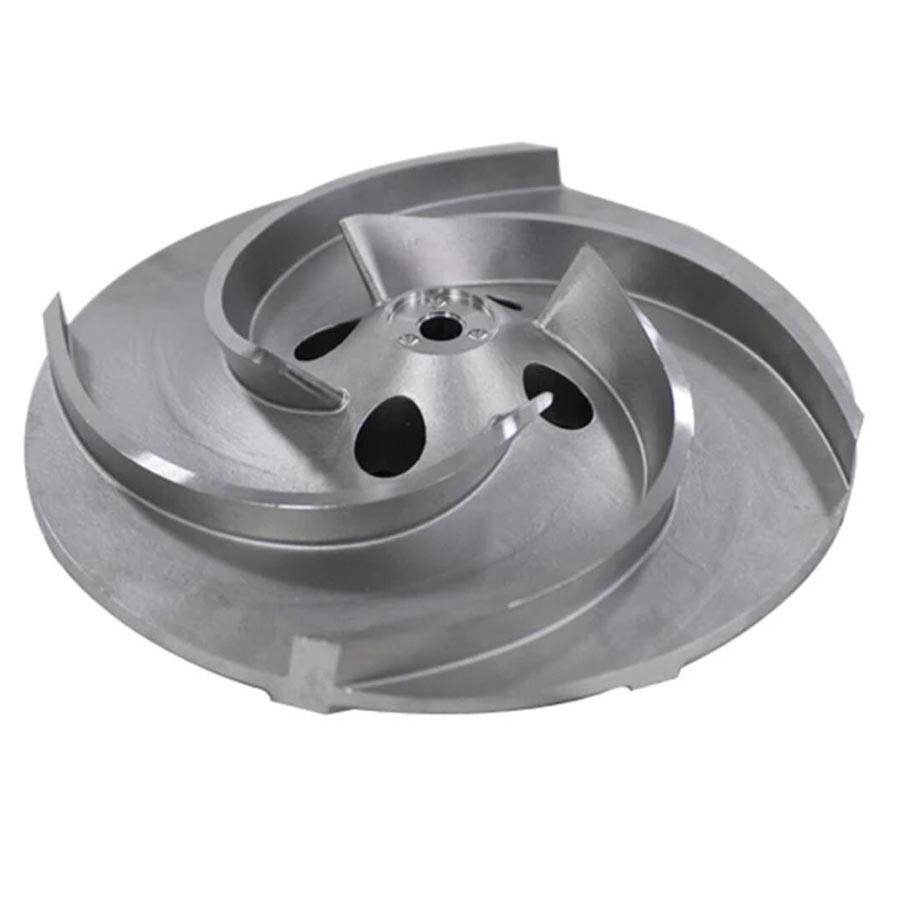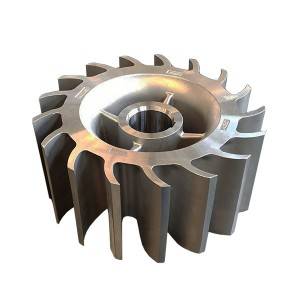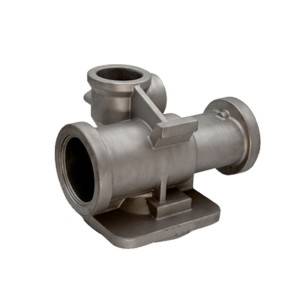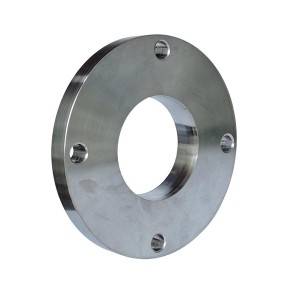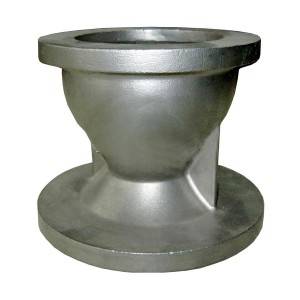AISI 316 (CF8M) stainless steel investment casting impeller from China steel foundry with CNC machining services are provide with competitive prices.
CF8M is a cast austenitic stainless steel which covered by ASTM A351, ASTM A743 and ASTM A744 standard. CF8M equal to SS 316/F 316 and Chinese Standard 0Cr17Ni12Mo2. CF8M is a molybdenum bearing modification of CF8 alloy and is the cast equivalent of wrought AISI 316 Stainless steel. CF8M is defined in ASMT A351, ASMT A743 and ASTM A744, which is for casting purpose only. SS 316 is defined in ASTM A240 and ASTM A276, it's for plate, sheet, strip or stainless steel bars. Another grade is named as F316, which is from ASTM A182 for forged parts only. TP316 will be found in ATSTM A376 for pipe only. The main applications of CF8M cast stainless steel cover: impellors, propellers, pump casings, valve bodies and press plates.
Investment (lost wax) casting is a method of precision casting which produces complex near-net-shape details using replication of wax patterns. Investment casting or lost wax is a metal forming process that typically uses a wax pattern surrounded by a ceramic shell to make a ceramic mold. When the shell dries, the wax is melted away, leaving only the mold. Then the casting component is formed by pouring molten metal into the ceramic mold.
According to the different binders for shell building, the investment casting could be divided into silica sol binder investment casting, water glass binder investment casting and the investment casting with their mixtures as binder materials. Silica sol is a typical water-based binder with a silicic acid colloid structure. It is a polymer colloidal solution in which highly dispersed silica particles are soluble in water. The colloidal particles are spherical and have a diameter of 6-100nm. The process of investment casting to make the shell is the process of gelling. There are many factors influencing gelation, mainly electrolyte, pH, sol concentration and temperature. There are many types of commercial silica sols, and the most used is alkaline silica sol with a silica content of 30%. In order to overcome the shortcomings of the long shell-making cycle of the silica sol shell, a quick-drying silica sol has been developed in recent years. The process of making silica sol shell is relatively simple. Each process has three processes: coating, sanding, and drying. Each process is repeated many times to obtain a multilayer shell of the required thickness.
In the silica sol shell making process, drying is the most critical process. Through drying, the water is volatilized, the silica sol gels, and the refractory particles are firmly bonded together, thereby obtaining a high-strength shell. This is a good preparation for the subsequent casting.
The casting obtained by the silica sol shell making process has low surface roughness, high dimensional accuracy and long shell making cycle. This process is widely used in casting high-temperature heat-resistant alloys, heat-resistant steels, stainless steels, carbon steels, low alloys, aluminum alloys and copper alloys.
The silica sol precision lost wax investment casting process is suitable for repeatable production of net shape casting components from a variety of different metals and high performance alloys. Although generally used for small castings, this process has been used to produce complete aircraft door frames, with steel castings of up to 500 kgs and aluminium castings of up to 50 kgs. Compared to other casting processes such as die casting or sand casting, it can be an expensive process. However, the components that can be produced using investment casting can incorporate intricate contours, and in most cases the components are cast near net shape, so require little or no rework once cast.
▶ Ferrous and Non-ferrous Materials for Investment Casting:
• Gray Iron: HT150, HT200, HT250, HT300, HT350; GJL-100, GJL-150, GJL-200, GJL-250, GJL-300, GJL-350; GG10~GG40.
• Ductile Iron or Nodular Iron: GGG40, GGG50, GGG60, GGG70, GGG80; GJS-400-18, GJS-40-15, GJS-450-10, GJS-500-7, GJS-600-3, GJS-700-2, GJS-800-2; QT400-18, QT450-10, QT500-7, QT600-3, QT700-2, QT800-2;
• Carbon Steel: AISI 1020 - AISI 1060, C30, C40, C45.
• Steel Alloys: ZG20SiMn, ZG30SiMn, ZG30CrMo, ZG35CrMo, ZG35SiMn, ZG35CrMnSi, ZG40Mn, ZG40Cr, ZG42Cr, ZG42CrMo...etc on request.
• Stainless Steel: AISI 304, AISI 304L, AISI 316, AISI 316L, 1.4401, 1.4301, 1.4305, 1.4307, 1.4404, 1.4571 and other stainless steel grade.
• Brass, Red Copper, Bronze or other Copper-based alloy metals: ZCuZn39Pb3, ZCuZn39Pb2, ZCuZn38Mn2Pb2, ZCuZn40Pb2, ZCuZn16Si4
• Other Materials as per your unique requirements or according to ASTM, SAE, AISI, ACI, DIN, EN, ISO, and GB standards
▶ Capabilities of Investment Casting Foundry
• Max Size: 1,000 mm × 800 mm × 500 mm
• Weight Range: 0.5 kg - 100 kg
• Annual Capacity: 2,000 tons
• Bond Materials for Shell Building: Silica Sol, Water Glass and their mixtures.
• Tolerances: On Request.
▶ Main Production Procedure
• Patterns & Tooling Design → Metal Die Making → Wax Injection → Slurry Assembly → Shell Building → De-Waxing → Chemical Composition Analysis → Melting & Pouring → Cleaning, Grinding & Shot Blasting → Post Processing or Packing for Shipment
▶ Inspecting Lost Wax Castings
• Spectrographic and manual quantitative analysis
• Metallographic analysis
• Brinell, Rockwell and Vickers hardness inspection
• Mechanical property analysis
• Low and normal temperature impact testing
• Cleanliness inspection
• UT, MT and RT inspection
▶ Post-Casting Process
• Deburring & Cleaning
• Shot Blasting / Sand Peening
• Heat Treatment: Normalization, Quench, Tempering, Carburization, Nitriding
• Surface Treatment: Passivation, Anodizing, Electroplating, Hot Zinc Plating, Zinc Plating, Nickel Plating, Polishing, Electro-Polishing, Painting, GeoMet, Zintec.
• Machining: Turning, Milling, Lathing, Drilling, Honing, Grinding.
▶ Advantages of Investment Casting Components:
• Excellent and smooth surface finish
• Tight dimensional tolerances.
• Complex and intricate shapes with design flexibility
• Capability to cast thin walls therefore a lighter casting component
• Wide selection of cast metals and alloys (ferrous and non-ferrous)
• Draft is not required in the molds design.
• Reduce the need for secondary machining.
• Low material waste.
▶ Why You Choose RMC for Custom Lost Wax Casting Parts?
• Full solution from one single supplier ranging customized pattern design to finished castings and secondary process including CNC machining, heat treatment and surface treatment.
• Costdown proposals from our professional engineers based on your unique requirement.
• Short leadtime for prototype, trial casting and any possible technical improvement.
• Bonded Materials: Silica Col, Water Glass and their mixtures.
• Manufacturing flexibility for small orders to mass orders.
• Strong outsourcing manufacturing capabilities.
